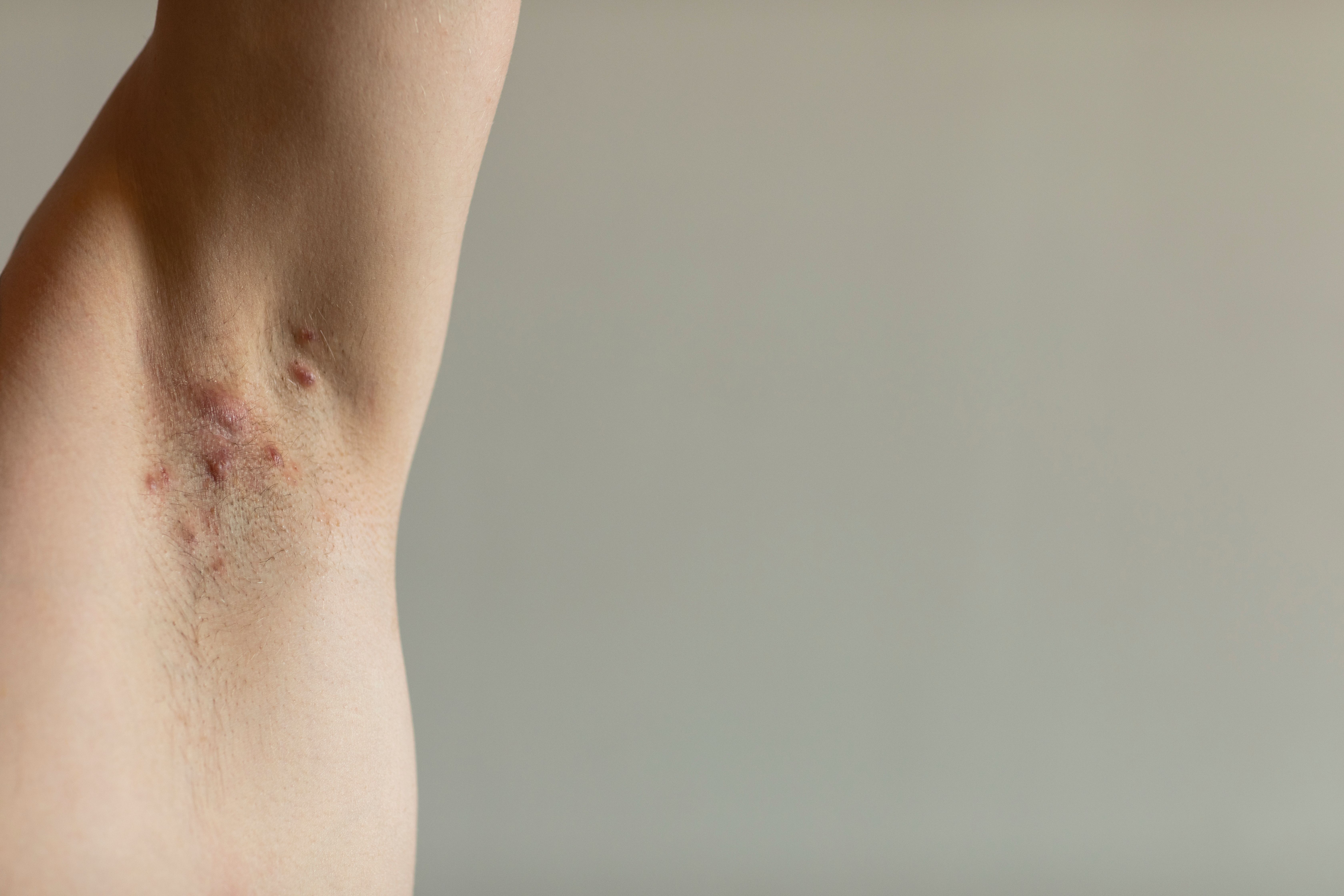- Case-Based Roundtable
- General Dermatology
- Eczema
- Chronic Hand Eczema
- Alopecia
- Aesthetics
- Vitiligo
- COVID-19
- Actinic Keratosis
- Precision Medicine and Biologics
- Rare Disease
- Wound Care
- Rosacea
- Psoriasis
- Psoriatic Arthritis
- Atopic Dermatitis
- Melasma
- NP and PA
- Skin Cancer
- Hidradenitis Suppurativa
- Drug Watch
- Pigmentary Disorders
- Acne
- Pediatric Dermatology
- Practice Management
- Prurigo Nodularis
- Buy-and-Bill
Article
Hidradenitis Suppurativa Linked to Atopic Diseases
Author(s):
Following a systematic review and observational study meta-analysis, researchers have uncovered an association between hidradenitis suppurativa and several atopic diseases.
Researchers in Taiwan have determined a connection between hidradenitis suppurativa (HS) and atopic diseases such as asthma and atopic dermatitis.
Photo: Lea/Adobe Stock

In a January 2023 research article1 published in Dermatology, researchers completed a systematic review and meta-analysis of the subject.
Upon review, patients with HS have a 1.50 pooled odds ratio of also having asthma, and a 4.10 pooled odds ratio of also having atopic dermatitis (AD).
While prior belief suggested that HS and allergic diseases may share similarities in terms of immune pathways2-3, “available evidences seemed to be inconsistent and the association was not well-developed yet,” the article said.
During the systematic analysis, researchers reviewed more than 1600 observational studies using the Newcastle-Ottawa Scale to account for and assess overall study quality. All studies were filtered through databases such as Embase, PubMed and Web of Science in order to meet relevance and quality criteria.
Of the 1600 studies reviewed, 12 were selected to undergo data extraction, at which point researchers analyzed heterogeneity in each study. Atopic diseases including allergic rhinitis, asthma, AD, and conjunctivitis were investigated. By the conclusion of the analysis, researchers determined that there was no significant linkage between HS and allergic rhinitis nor conjunctivitis, calling the current evidence insufficient.
Researchers, however, called the evidence associated with asthma and AD significant.
“Physicians should be aware of the reported association while caring [for] people with HS and related screening of allergies comorbidities should be recommended,” the research article said.
Prior research4 concurs, recommending comorbidity screenings in patients presenting with HS. Researchers cite the disease’s linkage to nearly 30 additional comorbidities, including dermatological concerns such as acne, dissecting cellulitis of the scalp, pilonidal cysts, and pyoderma gangrenosum.
At Winter Clinical Miami 2023, Andrea Murina, MD, associate professor of dermatology and Program Director at Tulane University School of Medicine, discussed optimizing patient outcomes with an HS diagnosis. In her session, she discussed the importance of both treatment and management of the condition.
However, she said there is often misinformation about the proper treatments available for patients with HS. In treating patients with HS, she said there are options available for a variety of factors and occurrences, including single lesions, multiple locations, prominent scarring or tunneling, uncontrolled pain, menstrual flare, and follicular occlusion.
“I think it’s our job as board-certified dermatologists to get them on the correct treatment,” she said.
References
- Gau S-Y, Chan WL, Tsai J-D. Risk of atopic diseases in patients with Hidradenitis Suppurativa: A systematic review and meta-analysis of observational studies. Dermatology. 2023. doi:10.1159/000528920
- Jiang SW, Whitley MJ, Mariottoni P, Jaleel T, MacLeod AS. Hidradenitis Suppurativa: Host-Microbe and Immune Pathogenesis Underlie Important Future Directions. JID Innov. 2021;1(1):100001. Published 2021 Jan 12. doi:10.1016/j.xjidi.2021.100001
- Averbeck M, Gebhardt C, Emmrich F, Treudler R, Simon JC. Immunologic principles of allergic disease. J Dtsch Dermatol Ges. 2007;5(11):1015-1028. doi:10.1111/j.1610-0387.2007.06538.x
- Garg A, Malviya N, Strunk A, et al. Comorbidity screening in hidradenitis suppurativa: Evidence-based recommendations from the US and Canadian Hidradenitis Suppurativa Foundations. J Am Acad Dermatol. 2022;86(5):1092-1101. doi:10.1016/j.jaad.2021.01.059




